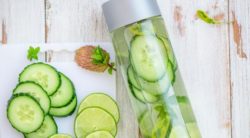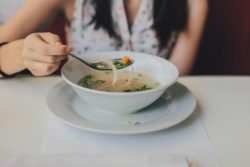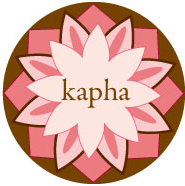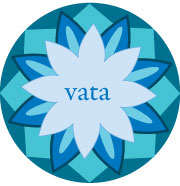What if You’re Just Thirsty?
3 Signs of Dehydration You Don’t Know About
1. Sugar Craving
Do you crave sweets and sugar? To the point where you feel totally out of control and – this is the kicker – the sweets you eat don’t even “do it” for you anymore? I have totally been there and a lot of my clients have, too. Think Dehydration.
So many people come to me because they’re struggling with a constant craving for sugar. And what I tell them is to trust their craving – it’s there for a reason. And, I invite them to consider: what if your craving for sweet is actually a sign that you’re just thirsty?
Almost every time I say this, my client looks and me and says, “yeah, that sounds right.”

2. Lack of Energy
We tend to crave sugar when we’re looking for either energy or comfort. And sometimes we miss the mark on exactly what our body’s telling us is missing.
- If you haven’t been getting enough rest and you’re running on empty…
- If you drink a lot of water but you pee it out as fast as you drink it…
- If you crave sweets and aren’t satisfied after eating them…
Chances are you’re thirsty and dehydration is the reason you’re feeling that way.

Thirst is quenched not by sugar, but by healthy fats, minerals, electrolytes and foods that are wet, warm and easy to digest – like soups and broths. Or water infused with fresh, succulent fruits. Or even a spiced, fresh pressed juice like beet with ginger, lemon, and carrot.
This is one reason why, in my seasonal Ayurvedic cleanse programs, we focus so much on hydration as our primary precursor to deeper detox.
More about my cleanse program here.
3. Trouble losing weight
If you’re not properly juiced up, your body has a hard time letting go of the fat stores it depends on when you’re dehydrated. Fat protects your cells and vital fluids, and that’s where toxins like to hang out. So you’re doubly toxic in that case!

Seeing as how spring is still upon us and the taste of sweet isn’t advised this season (Kapha’s still running the show until summer), you’ll feel a lot better when you get your sweet tooth in check and focus your energy on deeply nourishing your body with hydrating meals like the delicious broth below.
Here’s a mineral-rich soup that’s surprisingly satisfying – even when your mind is telling you it wants dessert. Try hydrating first with a dish like this. Then see what you’re still hungry (or thirsty) for. You might be surprised!

Talya’s Vegan Bone Broth
V-PK=
Preparation Time: 1 hour
Yield: 6 Serving
Ingredients
1/4 cup Wakame (or other seaweed/sea vegetable – you’ll find seaweed in the International section of most health food stores)
4 Tablespoons Coconut Oil
2 cups Celery, chopped
1/2-inch Fresh Turmeric root, finely chopped (optional)
1-inch Fresh Ginger root, finely chopped
2 Garlic Cloves, minced
2 Bay Leaves
1 cup Golden Beets, sliced thin
12 cups Low/No Sodium Vegetable Broth or Water
2 Tablespoons Coconut Aminos
1/4 cup Miso Paste
2 cups Spinach, roughly chopped
2 cups Kale, roughly chopped
1/4 cup Parsley or Arugula, roughly chopped
How to make
Soak the wakame in 1 cup of water and set aside. In a large stock pot, sauté the celery in coconut oil over low to medium heat. Add the optional turmeric, ginger, and garlic; saute for 5 minutes, or until the celery is tender. Add the bay leaves and beets to the celery. Pour in the vegetable broth and coconut aminos. Increase the heat to medium. Pour in the wakame, and its soak water. Cover.
Bring the broth to a near boil and reduce heat to low. Allow it to simmer for 45 minutes. Remove from heat. Stir in the miso paste until it dissolves. Add the spinach, kale, miso paste, and parsley and let it sit, covered, for another 10 minutes.
Strain out the vegetables if desired and use the broth as a stand-alone healing and deeply hydrating drink. Or, serve it with the light veggies as a soup. This recipe can also be made in a slow cooker or crockpot set on low-medium heat for 4 hours.
Ways to serve
Pour 16-ounces into your favorite mug and stir in:
1 teaspoon coconut oil or ghee
1/2 teaspoon apple cider vinegar and/or the juice of 1/2 lemon
Celtic salt to taste
Pinch of cumin, basil, or cardamom.
P.S. I give lots more Ayurvedic tips and recipes for how you can stay healthy and hydrated every season in my weekly newsletter. Don’t miss a thing by joining my email list here.
P.P.S. The taste of sweet represents so much more than sugar. In Ayurveda, sweet encompasses whole grains, whole milk dairy, fats, nuts, meat, root vegetables and sweet fruits.
Last but not least, I invite you to play and win with me! Do you want to win awesome self-care tools for an Ayurveda Every Day lifestyle? All you have to do is join my Nourish Your Body With Ayurveda 5-Day Bootcamp! Register here.




This is making me thirsty! : )
You’re the best!
Hi Talya,
How can the vegan bone broth be adjusted for Vata + ?
Or, can this be a base for any symptom goal and if so what key parts would need to be adjusted depending on the dosha targeted?
Thanks,
Hi Teresa! You adjust the vegan bone broth for Vata by adding more root vegetables and serving it hot with ghee or coconut oil.
I was very pleased to find this web-site.I wanted to thanks for your time for this wonderful read!! I definitely enjoying every little bit of it and I have you bookmarked to check out new stuff you blog post.